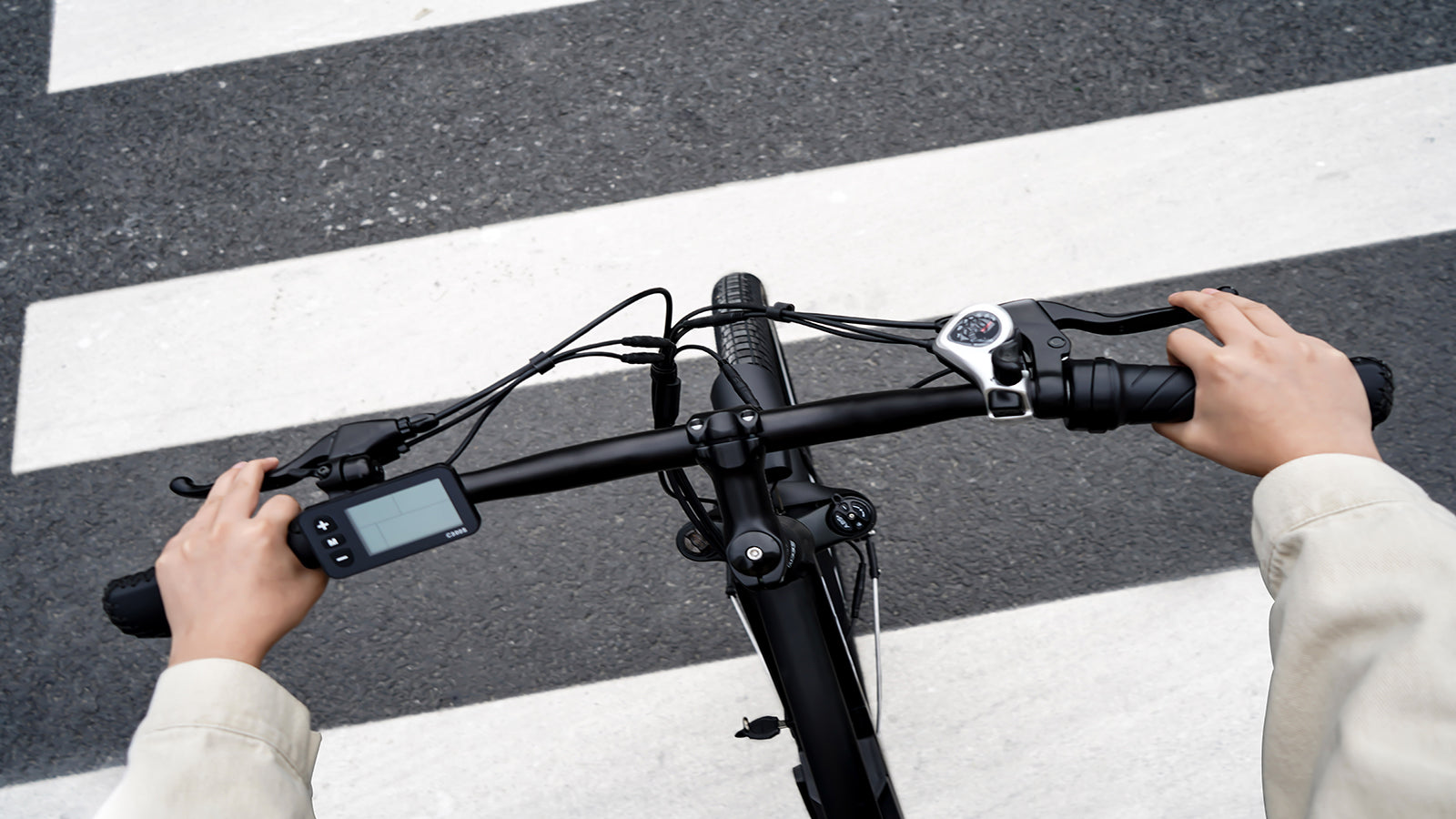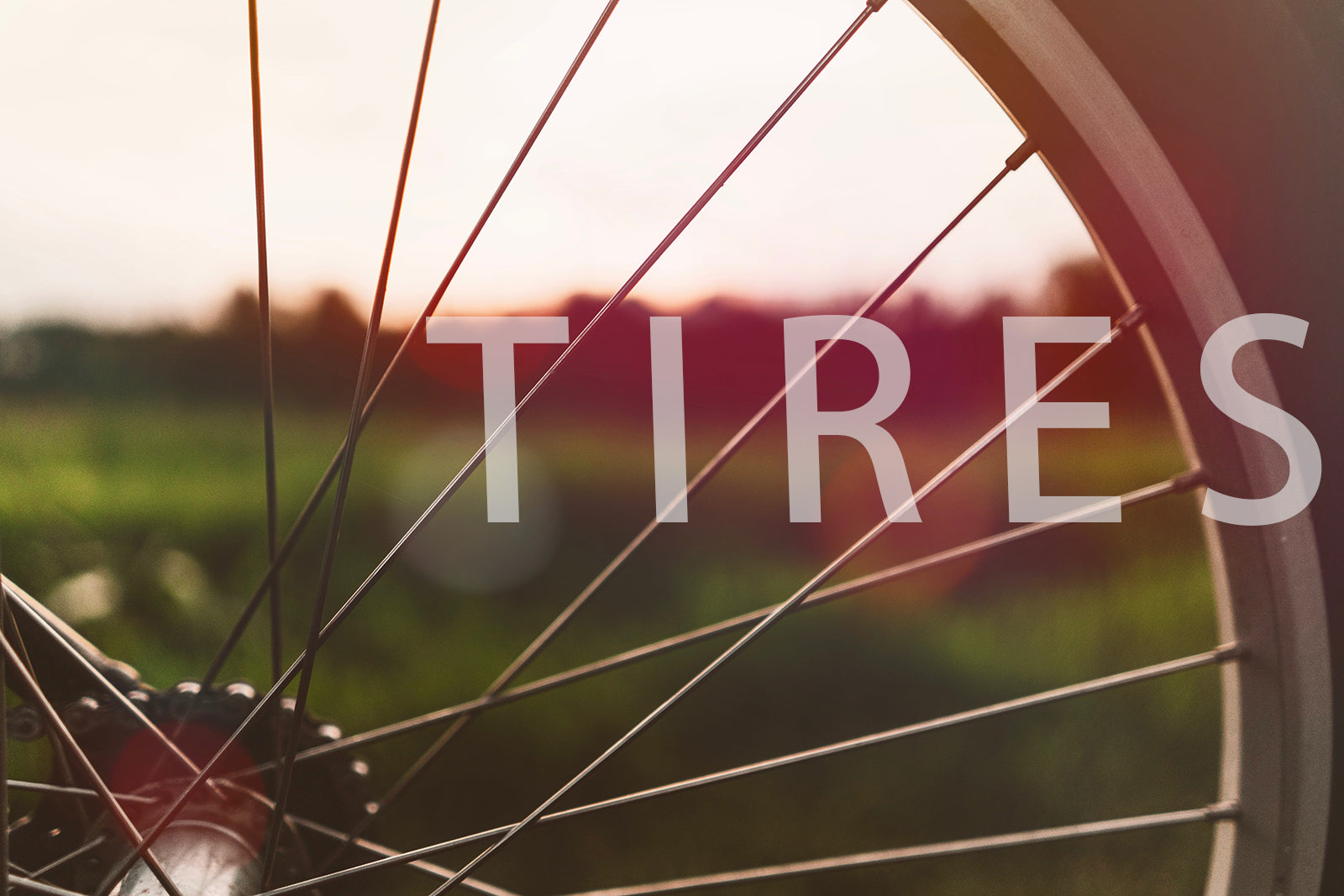Electric Bike: Thin Tire Or Fat Tire? | KBO Bike
Choosing the right tire for your electric bike has a great impact on how your e-bike performs. The speed of the electric bicycle, the range of distance covered, the maneuverability on different terrains, and the suspension are affected by the different types of you decide to fix on to your ebike.
Making the right decision on the tires is more crucial on an e-bike than compared to an electric bicycle as you spend more time riding through at high speeds.

A good set of e-bike tires can help prevent punchers from often occurring, which is way better than finding yourself changing the flat tire of an ebike with a hub motor wheel. So let me help you understand which tire should suit you best for your everyday travels.
There are mainly two types of tires, Fat tires and Thin tires. The differences between both are many: size, width, pressure limits, weight, and cost.
You need to know the type of terrain you deal with when you take your ebike out. It can be the roadside, pavements or off-roading. Try and analyze what surface do your tires use the most. If you travel on hard tar surfaces or Asphalt, you should use thin, smoother threaded commuter style tires as they provide excellent grip and provide good handling.
However, if you’re an avid mountaineer and would be using your ebike off-road, it’s recommended to equip your ebike with fat tires for balance, keep yourself grounded and ultimately have more control.

Thin Tires
Thin tires on e-bikes are meant for speed and have various advantages over thicker tires, especially if you like to race on an open road. Skinny tires are designed to have higher rolling rates compared to fat tires. Hence you can achieve high speeds that give you the edge you need while racing.
The tires help in cutting through the air because of their streamlined shape, and the width of the tires exert less pressure. It is making the bike lighter when compared to an e-bike with fat tires.
A lesser amount of energy is used to move the bike, making it easy for anyone to use.
Thin tires are made with minimal rubber, making them lighter than thicker ones, which helps handle the electric bike. One of the important things about thin tires is that it is made with fewer traction treads so your ebike will speed up on a smooth road.
Pros
●Thin tires are cheaper than fat tires as they are manufactured in larger numbers owing to their popular size profile. Skinny tires are also more affordable as they are made from lesser rubber, so the overall storage, packaging, and shipping (if ordered online) come at a reasonably cheaper rate than others.
●Thin tires are more efficient and easier to handle on your daily commute. They are much less heavy, thus experiencing less traction while riding on hard surfaces. This allows you to travel further while using less energy.
●Thin tires used on e-bikes will enable the rider to travel at higher speeds as the thin tires provide less Air resistance. This means that a the thinner the tire the easier it is to cut through the air as you ride along
●The overall weight of the bike reduces because heavy-duty components are not used to support the thin tires.
●Thin tires result in lesser damage to them over your daily commute.
Cons
●Thin tires are not ideal for lean angles and high speed cornering as there is less side grip upon leaning the bike for a sudden sharp turn.
●Thin tires may cause the rider to lose balance if they ride on uneven surfaces. If your electric bike gets stuck in a ditch, you’ll have to pedal your way out to carry on your way.
●You can’t over throttle on the bike unless the roads are clear and there are no obstructions or traffic about. Over-throttling can lead to accidents while commuting with thin tires
●Thin tires are not meant for trail biking or off-roading and can lead to less force while travelling on an uneven path.
●You must break gently so as not to stop at one go. This can be dangerous as the e-bike will lift off the ground or skid to a halt. Braking has to be done gently and in bursts.

Fat Tires
Electric bikes with fat tires are allured by cycling enthusiasts who love the outdoors. Fat tires provide excellent grip and traction on the most undone terrains. These tires are ready for anything nature can throw at them: slippery loose stones, muddy trails or snow ploughed roads. These bad boys will take you to places you would've never imagined. Fat tires were designed to reduce the overall pressure of the bike and rider by having an extra-wide contact surface. This helps the tires get a solid impression even when the surface is covered with snow.
Fat tires make it possible for you to ride your electric bikes on the sandy beaches, which most bikes don't have. If it rains, the wide-base tires will not slip and will provide you grip when taking corners.
If your heart is in the outdoors and you do a lot of riding off-roads during the weekends. Your tires are sure to be facing terrains that have dirt, sand, and grass. You can counter this surface by using aggressive treads that achieve maximum traction in forest or off-road environments.
Pros
●Electric bikes with Fat tires have proven to show more grip on all terrains, even while cornering. This makes it possible to hit those corners at high speeds and still maintain balance. The lean angles are greater, and the overall ability to manoeuvre the e-bike is improved. Check out more information about maintenance of ebike.
●With Fat tires, you can afford to over throttle and let your hub motors churn out what they can. You can cover more distance, and rest assured that the electric bike will remain stable the faster you go.
●Fat tires are ideal for off-roading and traveling on terrains that are muddy and unstable. Taking a trip to the mountains or the forest for a bit of R&R, I'd always recommend Fat tires to those heading out for a trip.
●You can break harder while using Fat tires as there are no potential slips or the chance of losing your balance and falling.
Cons
●Fat tires tend to cost more as they're made on a custom basis and can be seasonal. The main reason they cost more is that more rubber is used and they are not available freely everywhere.
●Fat tires increase the overall weight of the electric bike, making it heavier than traditional eBikes with thin tires. The suspension must be robust and large enough to handle the Fat tires while riding on uneven terrain.
●The rubber on the tires tends to go to waste if not utilized appropriately. The sides of the tires tend not to get used often, and these cause something called "chicken strips". This hampers the overall life of the tires, and as a rider, you'd lose stability if the tires are not utilized thoroughly.
●Greater rolling resistance as the tire's mass is high, resulting in a greater power is required and utilized for acceleration.
●Suspensions and brakes have to be larger and heavier and have to be thoroughly serviced regularly. The brakes have to be powerful enough to stop the eBike with fat tires.

Why are thin tires ideal for day to day commuting
Thin tires have shown promise with day to day regular commutes. On asphalt, skinny tires tend not to flatten much and are a primary reason cyclists who take part in races or regularly commuting to places within the city prefer thin tires on their cycles or e-bikes.
●Fat tires flatten out on the road (in the case of fat tires) greater friction is created, leading to lesser speed and momentum. The rolling resistance (the amount of friction built while rolling on a smooth surface) of e-bikes with thin tires have proven to be much lesser than those equipped with fatter tires
●With electric bikes for your daily commute, it’s ideal to have a set of thin tires so it can get you from point A to B in an instant. With narrow tires, you can be assured that the overall weight of the ebike will be much lighter as the chassis and suspension don’t have to be heavy and oversized to support fatter tires.
●It’s important to remember that the gear system on an ebike with thin tires is adjusted accordingly, making the pedal easier when you shift gears. This means that when using skinny tires, you can experience the most your ebike has to offer, especially on Asphalt and on tracks.
●The most significant advantage of owning thin tires is that the recommended air pressure required is high, normally in the region of 100-120psi. Higher pressure in the tires would be protected from glass shards or nails on the road, making your daily commute pleasant. Trust me, standing on the side of the road to fix a punctured flat tire is not a good idea, and you definitely won’t want to do that in bustling city traffic.
Thin tires as they’re long-lasting and are built to handle asphalt and tar roads like no other. From a safety and prolonged life of the thin tires to the ability to travel fast while exerting less energy, thin tires will always be the ideal set of tires to use on a daily commute.
Lastly, we provide a guide for e-bike beginners, read it before riding,
Stay safe and Happy ebiking!

























































